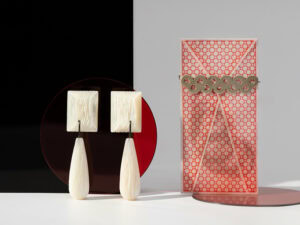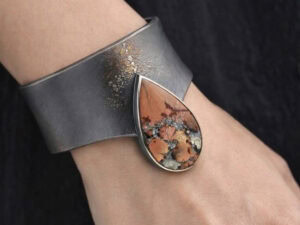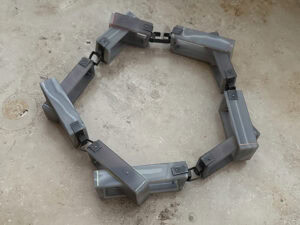
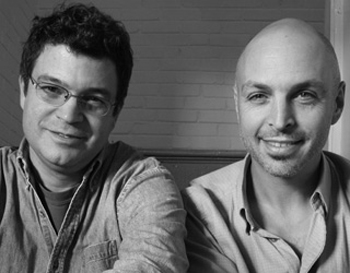
Steve Ford: David and I were assigned adjacent studio spaces at Tyler/Rome in 1984 and had similar work habits. We both liked to work until the building closed at midnight. We’d then walk back to our pensione, stopping at Giolliti’s near the Pantheon for a late night gelato. While our individual styles were very different, I think we were both intrigued by the other’s thinking about art and how to make a successful painting. Our first collaboration was in a figure drawing class there. Working next to each other, our two drawings of the same model had opposite problems. We spontaneously traded drawings and ‘corrected’ each other’s work.
David Forlano: I remember being interested in the way Steve thought about painting. We had studios directly next to each other, which allowed for constant dialogue about the process of making work. I was intrigued by Steve’s focus on the construction of paintings as an object.
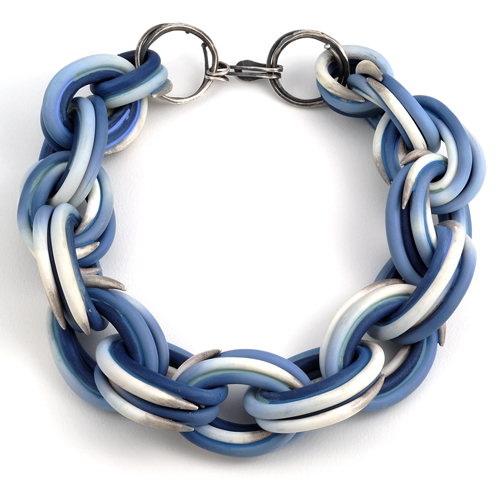
Steve Ford: Dave and I worked side by side for so many years, that we developed a kind of private language; a short-hand to talk about what we wanted to make. He moved to Santa Fe in 2005 and frankly I couldn’t see how things could continue (I’m the cynic in our partnership). To my surprise, it’s survived, thrived and in some ways improved. There is more space for each of us to explore ideas before presenting it to the other for a reaction. On a personal level, I also noticed that I was much more dependent on David’s reaction to my work, than he was to mine. I now use my iphone to email pics of work in process to David if I feel that I’m stuck, or at a loss about what to do next. The physical separation means that the process has slowed down, which is also a good thing in some ways. That is, I think that I’m more thoughtful and less rushed to bring ideas to fruition.
David Forlano: After many years of working side by side in a studio with Steve I found we had established a strong enough vocabulary between us that no distance could interfere with. We share digital images quickly and easily making this process even more seamless. I see a benefit of having both private studio space and a stable base of understanding about our collaborative process. This has given us the best of both worlds and our work has grown from it.

Steve Ford: I do find that polymer stands up to our curiosity about it, that there are endless things to do with it. I like its physical properties: it’s lightweight, strong, durable and stable. It doesn’t dry out while you’re working with it and doesn’t shrink or change color when baked. The color mixing seems infinite and we can manipulate it both before and after it’s been baked (cured), by sanding, polishing, carving, drilling, etc.
David Forlano: I like the versatility of the material. I like that I can think in color in the same way I do as a painter.
I know your work was in the Racine Art Museum exhibition called Terra Nova: Polymer Art at the Crossroads, which just ended in early February. Do you think this show established new thinking about polymer clay?
Steve Ford: I don’t know what to say about that as a maker. I don’t feel like promoting polymer clay as a material is my issue anymore – it used to be in the early years. Polymer enthusiasts now say that one should refer to the material as polymer, not polymer clay, but I can’t get too excited about that distinction. I’m happiest when someone, as an afterthought, asks what the materials are. To me, that means that the polymer has disappeared, or at least is a secondary consideration to the ideas that we’re expressing. It’s become a vehicle, boring in itself, as paint is to painting. That said, we did sell a major necklace to the Newark Museum as a result of the Terra Nova show, so I think it did have a positive influence on how museum curators see work done using polymer.
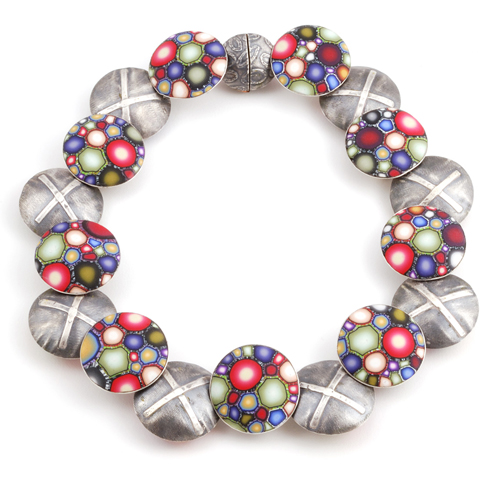
Steve, I understand that you were a print maker and that you also studied glass making at school. How did you end up making jewelry using polymer clay?
Steve Ford: I studied glass and printmaking, pre-Rome, at Washington University in St Louis. I liked the process-oriented nature of both media. Years later, I saw some simple work from California in polymer that reminded me of the glass techniques that I knew. Polymer seemed to bring together my interests in the plasticity of paint and glass, the planning process of printmaking and the possibility of complex color and surface of all three.
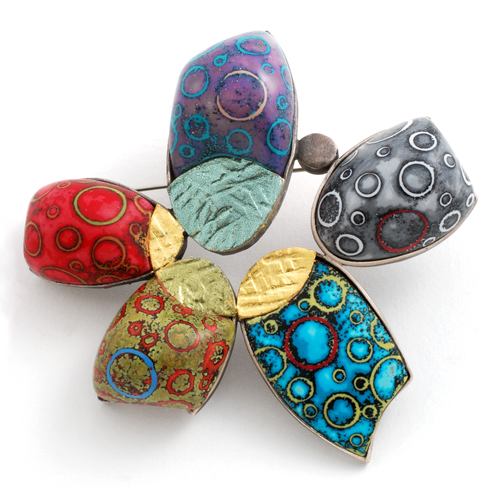
David Forlano: Jewelry was the last thing I ever thought I would be making in the studio. When we started working with polymer clay our intention was to build a business that could support our studio activities in fine art. We quickly became fascinated with the material and all of the potential it offered. My involvement in music and art continued off and on over the past 25 years, while simultaneously making jewelry.
David, your painting with a small nod to your jewelry is being featured in the New Mexico Museum of Art as part of an old museum tradition of featuring local artists. How were you chosen to be one of the inaugural artists for the reviving of this old practice?
David Forlano: In addition to my paintings there are three major Ford/Forlano necklaces on exhibit at the show. Like the other artists in the show my work has been part of the New Mexico art community for many years. Currently our jewelry is in Patina Gallery. I am aware that museum had a pool of thousands of artists to choose from. Though I am not privy to how they make their selection, I am greatly honored to be part of the inaugural show.
David, can you tell me what kind of music you play and do you have a group and play publicly? Do you think being a musician affects the jewelry you make in any way?

David, why did you move to Santa Fe from Philadelphia where you have lived for many years?
David Forlano: I moved to Santa Fe after most of my life in Philadelphia and the surrounding area in 2005. When I met my wife she had already been a long time resident of Santa Fe and I was overdue for a change of environment. I have found the easy pace of New Mexico a perfect match for my temperament.


